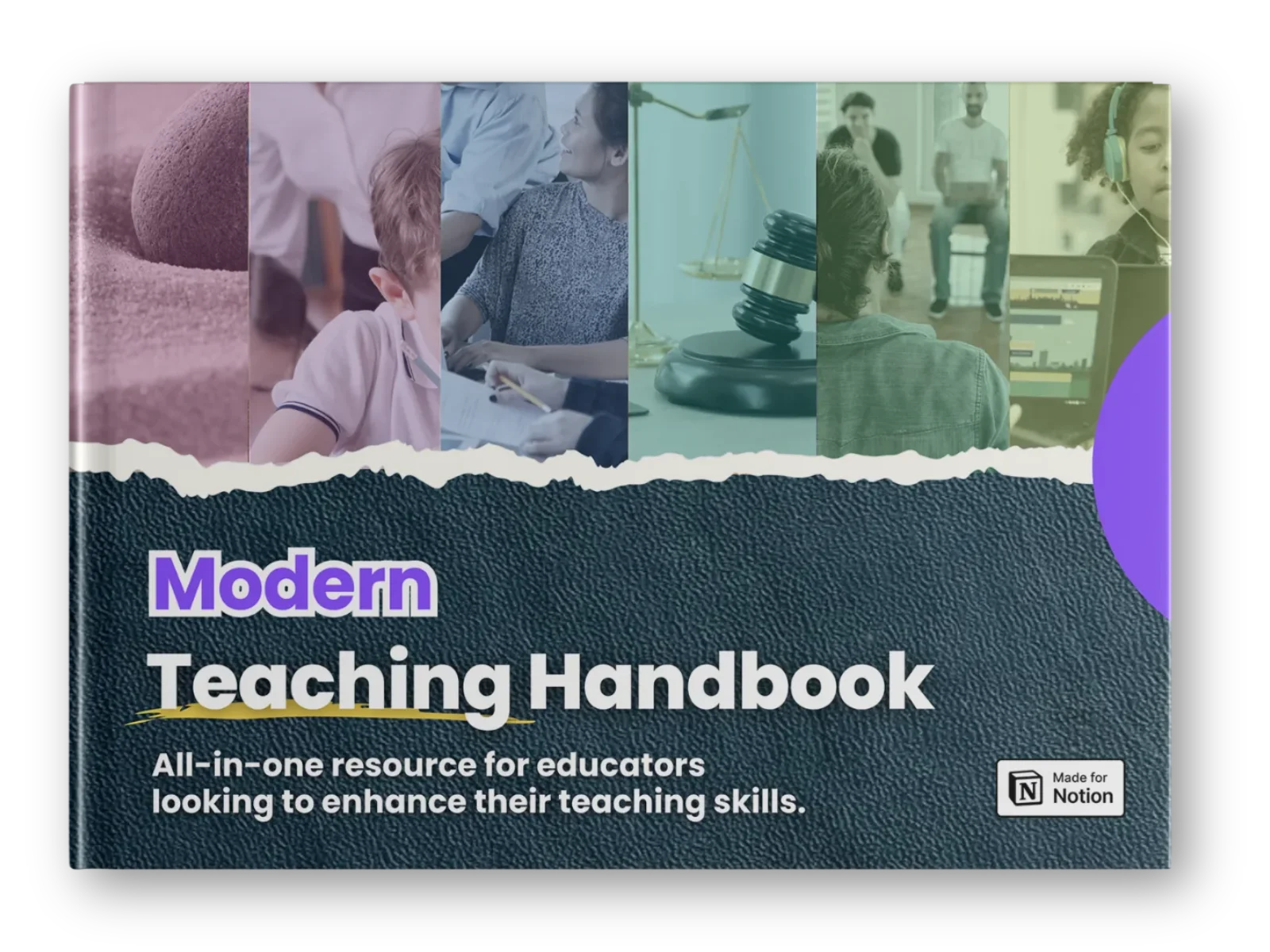Modern Teaching Handbook
Master modern education with the all-in-one resource for educators. Get your free copy now!



5 Benefits of Using a Virtual Call Assistant in Remote Education
5 Benefits of Using a Virtual Call Assistant in Remote Education
5 Benefits of Using a Virtual Call Assistant in Remote Education

Article by
Milo
ESL Content Coordinator & Educator
ESL Content Coordinator & Educator
All Posts
Remote education has transformed the way students learn and educators teach, but it also comes with its fair share of communication challenges. From managing parent inquiries to handling student scheduling, the administrative load in online learning environments can become overwhelming. That’s where a virtual call assistant steps in—not just as a convenience, but as a game-changing solution. These intelligent systems streamline communication, reduce response times, and free up educators to focus on what matters most: teaching.
Remote education has transformed the way students learn and educators teach, but it also comes with its fair share of communication challenges. From managing parent inquiries to handling student scheduling, the administrative load in online learning environments can become overwhelming. That’s where a virtual call assistant steps in—not just as a convenience, but as a game-changing solution. These intelligent systems streamline communication, reduce response times, and free up educators to focus on what matters most: teaching.
Modern Teaching Handbook
Master modern education with the all-in-one resource for educators. Get your free copy now!

Modern Teaching Handbook
Master modern education with the all-in-one resource for educators. Get your free copy now!

Modern Teaching Handbook
Master modern education with the all-in-one resource for educators. Get your free copy now!


As technology continues to evolve, so does its role in education. The global intelligent virtual assistant market revenue reached USD 15.3 billion in 2023, and it’s projected to skyrocket to USD 309.9 billion by 2033. This rapid growth highlights a growing recognition of virtual assistants’ value. In this article, we’ll explore 5 benefits of using a virtual call assistant in remote education for students..
Enhanced Student Support and Communication
Modern educational institutions are discovering that technology can improve student-educator relationships rather than hinder them. When students can reach out for help whenever they need it, learning becomes more fluid and less stressful. Students don't learn on a schedule, and questions don't always arise during office hours. A virtual call assistant can handle routine inquiries about assignments, deadlines, and course materials instantly. This means students get answers when they need them most, not when it's convenient for staff schedules.
Personalized Academic Guidance
Every student learns differently, and virtual assistant services can adapt to individual learning styles. These systems can guide students through complex concepts step-by-step, offering explanations tailored to each learner's pace and comprehension level.
Multilingual Support Capabilities
Remote education often serves diverse student populations. Virtual assistants can provide support in multiple languages, ensuring that language barriers don't become learning barriers. This capability proves essential for institutions serving international or immigrant communities.
The ability to provide consistent, patient support regardless of how many times a student asks the same question represents a significant advantage over traditional support models.
Improved Administrative Efficiency
Educational administration involves countless repetitive tasks that consume valuable time. When these processes become automated, staff can focus on what matters most: supporting student success.
Streamlined Enrollment and Registration
AI virtual assistant technology can handle the bulk of enrollment inquiries, guide students through application processes, and even schedule appointments for more complex discussions. This automation reduces wait times frustration of phone tag between students and admissions offices.
Automated Scheduling and Reminders
Keeping track of assignments, exams, and important deadlines becomes much easier when students receive automated reminders. Virtual assistants can send personalized notifications about upcoming due dates, schedule study sessions, and even remind students about available resources.
Reduced Administrative Workload
Teachers and staff spend less time on routine questions when virtual assistants handle the basics. This shift allows educators to invest more energy in curriculum development, student mentoring, and creative teaching approaches.
The efficiency gains aren't just theoretical – they translate into real-time savings that benefit everyone in the educational ecosystem.
24/7 Availability and Accessibility
Traditional support systems operate during business hours, but learning happens around the clock. Virtual assistants eliminate the constraints of time zones and office schedules.
Round-the-Clock Student Access
Students studying late at night or early in the morning can get help when they need it. This accessibility proves particularly valuable for working students, parents, or those in different time zones who can't always align with standard office hours.
Support for Different Learning Schedules
Not everyone learns best during traditional daytime hours. Marketing virtual assistant service providers understand that flexibility drives better outcomes. Virtual assistants accommodate diverse schedules, supporting students whether they're night owls or early risers.
Global Reach for International Programs
Educational institutions serving international students face unique challenges with time zone differences. Virtual assistants can provide consistent support regardless of geographic location, making distance learning truly global.
This constant availability creates a safety net that helps prevent small problems from becoming major obstacles to student success.
Cost-Effective Educational Operations
Budget constraints affect most educational institutions, making cost-effective solutions essential for sustainable growth and quality education delivery.
Reduced Staffing Costs
Hiring, training, and managing full-time support staff requires a significant investment. Digital marketing virtual assistant solutions offer professional support without the overhead costs of traditional employees. Institutions can scale support up or down based on actual needs rather than maintaining fixed staff levels.
Scalable Support Solutions
Student enrollment fluctuates throughout the academic year. Virtual assistants can handle increased call volumes during peak periods like registration or exam time without requiring temporary staff hiring or overtime costs.
Lower Infrastructure Requirements
Traditional call centers require physical space, equipment, and utilities. Virtual solutions eliminate these overhead expenses while often providing superior service quality and consistency.
The cost savings allow institutions to redirect resources toward educational programs, technology upgrades, or other student-focused initiatives.
Scalable Student Engagement Solutions
Maintaining engagement in remote learning environments requires innovative approaches that can adapt to changing needs and growing student populations.
Interactive Learning Support
Virtual assistants can facilitate peer discussions by moderating forums and suggesting relevant topics. This capability helps recreate the collaborative aspects of traditional classroom environments in virtual settings.
Data-Driven Engagement Insights
Modern virtual assistant systems collect valuable data about student interactions, common questions, and engagement patterns. This information helps educators identify areas where students struggle most and adjust their teaching approaches accordingly.
Customizable Communication Preferences
Different students prefer different communication methods. Some learn better through voice interactions, while others prefer text-based support. Virtual assistants can adapt to individual preferences, providing more effective support for diverse learning styles.
These engagement tools help address the fundamental challenge of keeping students connected and motivated in remote learning environments.
FAQs
What specific tasks can virtual call assistants handle in educational settings?
Virtual assistants manage enrollment inquiries, schedule appointments, send assignment reminders, provide course information, handle technical support questions, and facilitate basic academic guidance for students.
How do virtual assistants integrate with existing educational technology systems?
Most virtual assistant platforms offer APIs and integrations with learning management systems, student information systems, and communication tools, ensuring seamless workflow integration without disrupting current processes.
What's the typical cost savings compared to traditional support staff?
Educational institutions typically save 40-60% on support costs while improving response times and availability, though exact savings depend on current staffing levels and support volume requirements.

As technology continues to evolve, so does its role in education. The global intelligent virtual assistant market revenue reached USD 15.3 billion in 2023, and it’s projected to skyrocket to USD 309.9 billion by 2033. This rapid growth highlights a growing recognition of virtual assistants’ value. In this article, we’ll explore 5 benefits of using a virtual call assistant in remote education for students..
Enhanced Student Support and Communication
Modern educational institutions are discovering that technology can improve student-educator relationships rather than hinder them. When students can reach out for help whenever they need it, learning becomes more fluid and less stressful. Students don't learn on a schedule, and questions don't always arise during office hours. A virtual call assistant can handle routine inquiries about assignments, deadlines, and course materials instantly. This means students get answers when they need them most, not when it's convenient for staff schedules.
Personalized Academic Guidance
Every student learns differently, and virtual assistant services can adapt to individual learning styles. These systems can guide students through complex concepts step-by-step, offering explanations tailored to each learner's pace and comprehension level.
Multilingual Support Capabilities
Remote education often serves diverse student populations. Virtual assistants can provide support in multiple languages, ensuring that language barriers don't become learning barriers. This capability proves essential for institutions serving international or immigrant communities.
The ability to provide consistent, patient support regardless of how many times a student asks the same question represents a significant advantage over traditional support models.
Improved Administrative Efficiency
Educational administration involves countless repetitive tasks that consume valuable time. When these processes become automated, staff can focus on what matters most: supporting student success.
Streamlined Enrollment and Registration
AI virtual assistant technology can handle the bulk of enrollment inquiries, guide students through application processes, and even schedule appointments for more complex discussions. This automation reduces wait times frustration of phone tag between students and admissions offices.
Automated Scheduling and Reminders
Keeping track of assignments, exams, and important deadlines becomes much easier when students receive automated reminders. Virtual assistants can send personalized notifications about upcoming due dates, schedule study sessions, and even remind students about available resources.
Reduced Administrative Workload
Teachers and staff spend less time on routine questions when virtual assistants handle the basics. This shift allows educators to invest more energy in curriculum development, student mentoring, and creative teaching approaches.
The efficiency gains aren't just theoretical – they translate into real-time savings that benefit everyone in the educational ecosystem.
24/7 Availability and Accessibility
Traditional support systems operate during business hours, but learning happens around the clock. Virtual assistants eliminate the constraints of time zones and office schedules.
Round-the-Clock Student Access
Students studying late at night or early in the morning can get help when they need it. This accessibility proves particularly valuable for working students, parents, or those in different time zones who can't always align with standard office hours.
Support for Different Learning Schedules
Not everyone learns best during traditional daytime hours. Marketing virtual assistant service providers understand that flexibility drives better outcomes. Virtual assistants accommodate diverse schedules, supporting students whether they're night owls or early risers.
Global Reach for International Programs
Educational institutions serving international students face unique challenges with time zone differences. Virtual assistants can provide consistent support regardless of geographic location, making distance learning truly global.
This constant availability creates a safety net that helps prevent small problems from becoming major obstacles to student success.
Cost-Effective Educational Operations
Budget constraints affect most educational institutions, making cost-effective solutions essential for sustainable growth and quality education delivery.
Reduced Staffing Costs
Hiring, training, and managing full-time support staff requires a significant investment. Digital marketing virtual assistant solutions offer professional support without the overhead costs of traditional employees. Institutions can scale support up or down based on actual needs rather than maintaining fixed staff levels.
Scalable Support Solutions
Student enrollment fluctuates throughout the academic year. Virtual assistants can handle increased call volumes during peak periods like registration or exam time without requiring temporary staff hiring or overtime costs.
Lower Infrastructure Requirements
Traditional call centers require physical space, equipment, and utilities. Virtual solutions eliminate these overhead expenses while often providing superior service quality and consistency.
The cost savings allow institutions to redirect resources toward educational programs, technology upgrades, or other student-focused initiatives.
Scalable Student Engagement Solutions
Maintaining engagement in remote learning environments requires innovative approaches that can adapt to changing needs and growing student populations.
Interactive Learning Support
Virtual assistants can facilitate peer discussions by moderating forums and suggesting relevant topics. This capability helps recreate the collaborative aspects of traditional classroom environments in virtual settings.
Data-Driven Engagement Insights
Modern virtual assistant systems collect valuable data about student interactions, common questions, and engagement patterns. This information helps educators identify areas where students struggle most and adjust their teaching approaches accordingly.
Customizable Communication Preferences
Different students prefer different communication methods. Some learn better through voice interactions, while others prefer text-based support. Virtual assistants can adapt to individual preferences, providing more effective support for diverse learning styles.
These engagement tools help address the fundamental challenge of keeping students connected and motivated in remote learning environments.
FAQs
What specific tasks can virtual call assistants handle in educational settings?
Virtual assistants manage enrollment inquiries, schedule appointments, send assignment reminders, provide course information, handle technical support questions, and facilitate basic academic guidance for students.
How do virtual assistants integrate with existing educational technology systems?
Most virtual assistant platforms offer APIs and integrations with learning management systems, student information systems, and communication tools, ensuring seamless workflow integration without disrupting current processes.
What's the typical cost savings compared to traditional support staff?
Educational institutions typically save 40-60% on support costs while improving response times and availability, though exact savings depend on current staffing levels and support volume requirements.
Modern Teaching Handbook
Master modern education with the all-in-one resource for educators. Get your free copy now!

Modern Teaching Handbook
Master modern education with the all-in-one resource for educators. Get your free copy now!

Modern Teaching Handbook
Master modern education with the all-in-one resource for educators. Get your free copy now!

Table of Contents
Modern Teaching Handbook
Master modern education with the all-in-one resource for educators. Get your free copy now!
2025 Notion4Teachers. All Rights Reserved.
2025 Notion4Teachers. All Rights Reserved.
2025 Notion4Teachers. All Rights Reserved.
2025 Notion4Teachers. All Rights Reserved.







